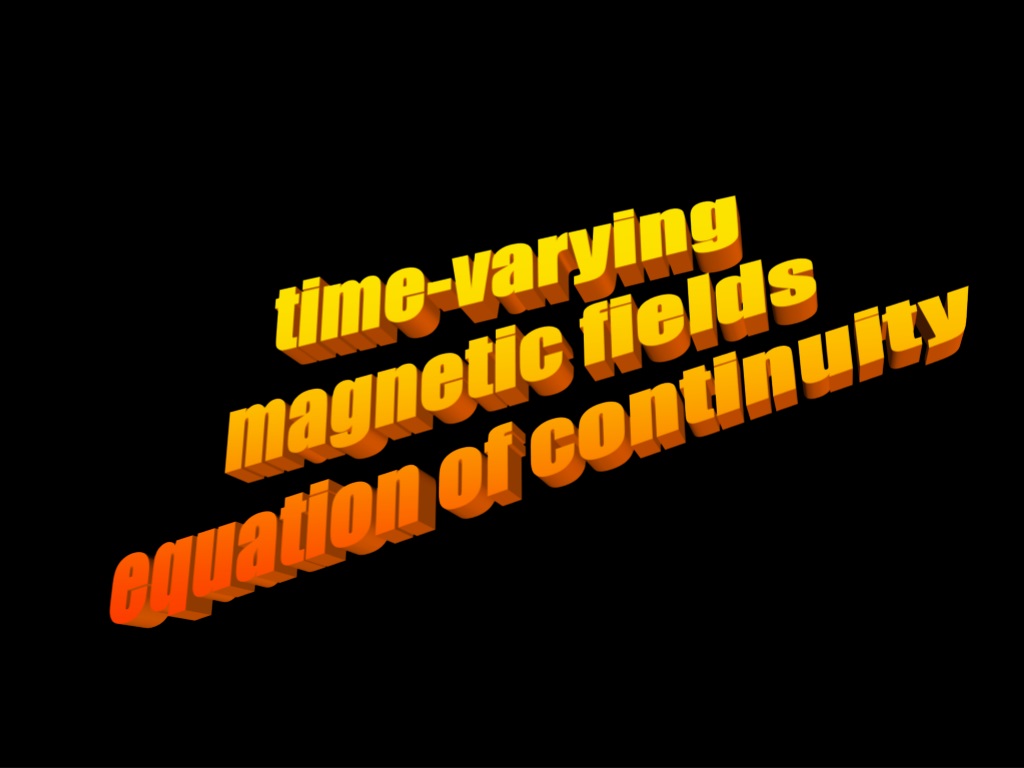The result indicates that a time-varying electric field is generated by a spatially varying magnetic field. (13.4.4) and (13.4.8), one may verify that both the electric and magnetic fields satisfy the one-dimensional wave equation. To show this, we first take another partial derivative of. The result indicates that a time-varying electric field is generated by a spatially varying magnetic field. (13.4.4) and (13.4.8), one may verify that both the electric and magnetic fields satisfy the one-dimensional wave equation. To show this, we first take another partial derivative of Eq. (13.4.5) with respect to x,. Faraday’s Law of Induction (fundamental operating principle of Transformers, Inductors, Motors, Generators). Static magnetic field produces no current flow. Free genogram template for mac. A time-varying magnetic field produces an induced voltage (called electromotive force or simply emf) in a closed circuit, which causes a flow of current. Faraday’s Law of Induction (fundamental operating principle of Transformers, Inductors, Motors, Generators). Static magnetic field produces no current flow. A time-varying magnetic field produces an induced voltage (called electromotive force or simply emf) in a closed circuit, which causes a flow of current. View Time Varying Fields.pdf from SOFTWARE E 305 at European University of Lefke.


Time Varying Magnetic Fields
- 8.1: Comparison of Static and Time-Varying Electromagnetics
- Maxwell’s Equations in the general (time-varying) case include extra terms that do not appear in the equations describing electrostatics and magnetostatics. These terms involve time derivatives of fields and describe coupling between electric and magnetic fields.
- 8.2: Electromagnetic Induction
- When an electrically-conducting structure is exposed to a time-varying magnetic field, an electrical potential difference is induced across the structure. This phenomenon is known as electromagnetic induction. A convenient introduction to electromagnetic induction is provided by Lenz’s Law. This section explains electromagnetic induction in the context of Lenz’s Law and provides two examples.
- 8.3: Faraday’s Law
- Faraday’s Law describes the generation of electric potential by a time-varying magnetic flux. This is a form of electromagnetic induction.
- 8.4: Induction in a Motionless Loop
- In this section, we consider the problem with a single motionless loop of wire in the presence of a spatially-uniform but time-varying magnetic field. A small gap is introduced in the loop, allowing us to measure the induced potential VT . Additionally, a resistance R is connected across VT in order to allow a current to flow. This problem was considered as an introduction to Faraday’s Law; in this section, we shall actually work the problem and calculate some values.
- 8.5: Transformers - Principle of Operation
- A transformer is a device that connects two electrical circuits through a shared magnetic field. Transformers are used in impedance transformation, voltage level conversion, circuit isolation, conversion between single-ended and differential signal modes, and other applications.1 The underlying electromagnetic principle is Faraday’s Law – in particular, transformer emf.
- 8.6: Transformers as Two-Port Devices
- We shall now consider ratios of current and impedance in ideal transformers, using the two-port model.
- 8.7: The Electric Generator
- A generator is a device that transforms mechanical energy into electrical energy, typically by electromagnetic induction via Faraday’s Law. For example, a generator might consist of a gasoline engine that turns a crankshaft to which is attached a system of coils and/or magnets. This rotation changes the relative orientations of the coils with respect to the magnetic field in a time-varying manner, resulting in a time-varying magnetic flux and subsequently induced electric potential.
- 8.8: The Maxwell-Faraday Equation
- In this section, we generalize Kirchoff’s Voltage Law, previously encountered as a principle of electrostatics, which states that in the absence of a time-varying magnetic flux, the electric potential accumulated by traversing a closed path C is zero.
- 8.9: Displacement Current and Ampere’s Law
- In this section, we generalize Ampere’s Law, previously encountered as a principle of magnetostatics. We shall now demonstrate that this equation is unreliable if the current is not steady; i.e., not DC.



